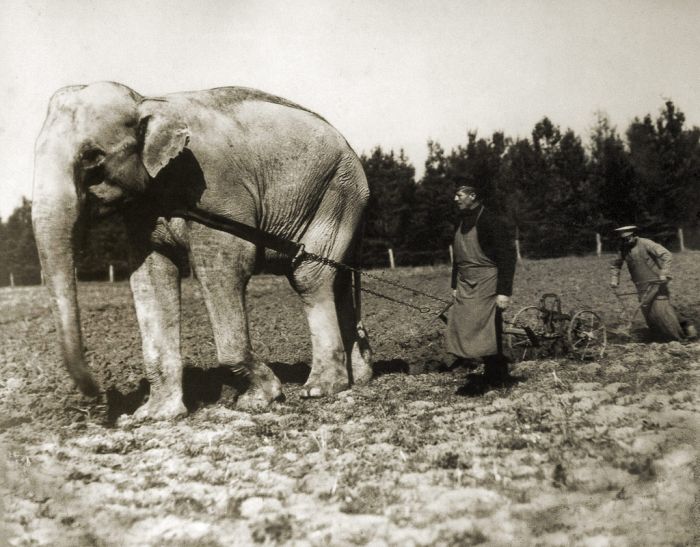
Fall Plowing at Jones Ranch. She Can Help With the Rock Picking.
Dear Rock-Picking Customers,
Another October week past and now the holiday season is almost upon us. We here at Jones Ranch have been scrambling to get last minute dry-season work done. We have been preparing a field for fall planting to triticale and hay grasses. This marks the fourth time we have worked this ground since plowing the sod back in 2012. This process has been slowed by the rain and the incredible number of rocks to pick. It is extremely productive dirt, but the rock harvest is like something out of a fable involving dragons teeth, lusty maidens and a magic fountain. From 25 acres we have picked ten dump truck loads of rocks and every pass of the disk brings up more. The topsoil on this place is only maybe 14" deep and it is hard to figure out where the rocks keep coming from. Previous plowers left a stadium-sized rock pile in the woods. Lopez is blessed with abundant rocks. This is likely part of what drew the mostly Scotch-Irish farmer/settler folk to the island, lo these 150 some years ago--it reminded them of their own rock-bound homeland. This particular spot was known as the Maulsbey Place and until the mid-1960's had a small cabin in the middle of it. This cabin, after a few moves, is now situated in Lopez Village and serves as a vacation rental.

No Rocks, No Chickens. Nice Place to Stay.
Every spring we go and pick daffodils on the old house site, now that we have worked the ground the daffodils have divided and spread a bit, so a patch that was a tight 50' radius is now a scattered 200' strip. The last resident of the cabin before it was moved was an elderly firewood cutter from the steamboat days. Before the petroleum age, the mosquito fleet boats that served the islands ran on wood-fired steam power and burnt a phenomenal amount of firewood. Folks throughout the region made their living cutting the gnarled, old growth island timber for steamer fuel. This particular character ran a steam-powered stationary buzz saw set up on the East side of the island. Oxen dragged logs to the saw, where they were bucked into four foot lengths and split with black powder splitting guns. The principle was to load a powder charge into a bifurcated wedge that looked a little like a shoe-horn, drive it into the end of a 4' length of wood, then detonate the charge. When this worked it neatly split the round into manageable-sized chunks. When it didn't, it could fire the whole works of out of the log with explosive force. We remember any number of elderly San Juan Islanders with nasty scars and missing finger digits from splitting gun accidents. After the steamboat days ended firewood cutters switched to supplying the lime kilns on San Juan and Orcas with cordwood for cooking lime. Firewood cutters in those days had only to stack up wood along the shoreline. Sooner or later a steamer or kiln barge would come snuggle up to the bank on a rising tide and put all hands to work chucking cordwood aboard.
Our older farmer friends recall this man linking out his well deserved retirement in a two-roomed homestead shack along with a few hundred chickens, who lived with him in the cabin, a wallet full of antique cash money from the steamboat days, and an ever-present jug of rot gut whiskey.
.jpg)
I'd Rather be Drinking and Raising Chickens
Some of the rocks are quite beautiful. We have picked any number of pinkish, semi-translucent chunks of what appears to be granite. We are also seeing a great number of metamorphic rocks, and what appears to be shale. They are of a surprisingly uniform size, most of them just about the size of a man's head. Our science knowledge here at Jones Ranch tends more to biology than geology, and the rocks are pretty well caked with mud, but beyond the novelty aspect of the volume of rocks, the exercise has whetted our appetite to know more about the mysterious source of the endless rocks. Are they working their way up from the clay subsoil layer? And they being dropped by giant, night-flying birds? Are our neighbors salting the fields for the fun of seeing us sweat? In any case, we are doing our best to get the field done and planted before the soggy season fully shuts us out, but we will see. Here's hoping for a nice dry spell!

Alert! Octo Shortage!
Much to our shock and horror, we have found ourselves octo-less this last week or so. Giant Pacific Octo has long been our most stable and consistent product, when fresh fish falters, this eager freezer friend has seen us, and many of you, through. All of our regular sources have come up dry, actually some of our sources have been calling us for product. This is unexpected, given the huge volumes of octo generally floating around. As ever, when faced with a seafood supply question, the F.O.G. Truth Troops swung into action. Our octopus is by-catch in the Alaska cod fishery. Most of this comes from federally managed waters, all waters more than three miles off the coast, and the balance comes from Alaska State waters. Octo are caught in the cod longline, cod pot and cod jig fisheries, as well as in crab and drag fisheries. Catches range from 500,000#/yr- 2,000,000#/yr. Most of the catch is sold for bait--Octo is the best bottom-fish bait there is. Tentacles hold on hooks better than anything, and most bottom fish have a great, unrequited love for Octopus. Octo are delicious, highly intelligent and wily. The average cod or halibut has little chance of eating Octopus in any kind of fair fight. The rest of the Octo catch is sold for food, mostly to the Iberian countries. We peel off a goodly chunk for our friends and neighbors. Octo is our children's favorite lunch meat-cook off one Octo and you have meat for a week for a family of six.
Big Eight-Armed, Three-Hearted Monster--An Animal Like No Other.

Octopi are the most advanced members of the mollusk family. They are direct relations to clams, oysters and scallops.
Over 300 species of octopus haunt salt waters world-wide and are heavily targeted by fisheries throughout most of their range. The common Octopus, the most widely distributed species, is targeted by Spanish draggers working the Sahara Banks off Western Africa. This fishery yields 100 million plus pounds per year, animals that are not available for local folk. In many parts of the world octopi are caught by divers squirting bleach into caves- when the choking, blinded animal darts out the diver bags it. From a sustainability and fairness perspective, non-American Octo needs to be considered with a very jaundiced eye.
Globally the catch for all species is around 800 million pounds per year. This represents a huge increase over the past few decades. Like coyotes, white-tailed deer and starlings, Octopi are thriving in the Anthropocene. Their short life-cycle, prolific breeding and opportunistic feeding makes them uniquely well suited to modern times. One signature Octo trick is the ability to open crab and lobster pots and pull out the catch. Unlike Lopez-style crab poachers, the Octo neither close the pots back up, nor leave a beer for the disappointed crabber. On these shores targeted commercial fisheries have been conducted with strings of small plastic pots. The idea is that the creatures take up housekeeping in the pots, then hold fast while the pots are being pulled to the surface.
Octo typically live in fairly shallow waters--200 meters or less, though they can live deeper if they like. Their primary diet is crustaceans and shellfish. Octo can grow almost as fast as food is available, under ideal conditions they'd eat 30% of their body weight per day. If food becomes scarce they can hold at very low levels of metabolism. With eight wriggling arms Octo can overwhelm just about any prey unable to swim fast enough to get away and the hard beak of an octopus can crack through just about any shell. They also have a mild venom with which to subdue prey. Octopi have three hearts, an extremely efficient gill arrangement inside their body cavity--the Octo can pulse water through its gills to maximize oxygen assimilation, and they can direct absorb oxygen through their skin and into the blood stream. Octopi can change color at will, and have remarkable abilities to regulate their bodies at wildly varying depth-related pressures. Octopi learn faster than human children, usually they need be shown a function, like unscrewing a lidded jar with food inside, only once to achieve mastery. Octopi have been proven to use tools, build houses, and exhibit long-term memory.
The Biggest Octopus Lives in F.O.G Home Waters. Or Does it?
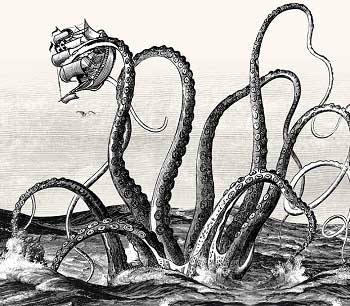
What a Terrifying Animal.
The Giant Pacific Octopus, our favorite species, ranges from So-Cal to the Korean Sea. The world record specimen weighed in at 600# and had a tentacle span of 30 feet. Old-time Nordic fishermen and whalers spoke of a much larger Octo, known as the Kraken. So vivid and numerous were the descriptions that Linnaeus included the Kraken, dubbed Microcosmus marinus in the first edition of his Systema Naturae (1735), a taxonomic classification of living organisms. This animal was large enough that mariners mistook them for islands and the whirlpools from submerging Kraken were strong enough to founder ships. Fishermen tried to find and follow the Kraken because of the huge schools of fish that followed them around. They were not actively hostile to humans, but would opportunistically eat drowning fishermen. Existence of the Kraken, like that of most sea monsters, has never been completely debunked.
Albert Tennyson was so taken by the notion of the Kraken he immortalized it in a sonnet, entitled, imaginatively, "Kraken"
Below the thunders of the upper deep;
Far far beneath in the abysmal sea,
His ancient, dreamless, uninvaded sleep
The Kraken sleepeth: faintest sunlights flee
About his shadowy sides; above him swell
Huge sponges of millennial growth and height;
And far away into the sickly light,
From many a wondrous grot and secret cell
Unnumber'd and enormous polypi
Winnow with giant arms the slumbering green.
There hath he lain for ages, and will lie
Battening upon huge seaworms in his sleep,
Until the latter fire shall heat the deep;
Then once by man and angels to be seen,
In roaring he shall rise and on the surface die.
Far far beneath in the abysmal sea,
His ancient, dreamless, uninvaded sleep
The Kraken sleepeth: faintest sunlights flee
About his shadowy sides; above him swell
Huge sponges of millennial growth and height;
And far away into the sickly light,
From many a wondrous grot and secret cell
Unnumber'd and enormous polypi
Winnow with giant arms the slumbering green.
There hath he lain for ages, and will lie
Battening upon huge seaworms in his sleep,
Until the latter fire shall heat the deep;
Then once by man and angels to be seen,
In roaring he shall rise and on the surface die.
Octo-Apeasement.

Home of the Eurocrat. Soft on Cuttlefish. Hard on Taxpayers.
Octopus are extremely well-represented in literature and culture, we have been fascinated by them for as long as we have known of them. They also have a remarkable ability to inspire sympathy in humans, here in Puget Sound our targeted Octopus fishery has been closed for 20 some years. Local populations are extremely robust, but tender-hearted WDF&W staff closed the fishery for sentimental reasons--the man currently in charge has a soft spot for the wily creatures. Our urchin diver is the same way. One of his hard and fast rules for harvest divers is no harming the Octopi.
A few years ago the European Commission found time to issue a string of regulations regarding treatment of Cephalopods. Science experiments involving Octo, Squid and Cuttlefish must be "ethically evaluated", the emotional impact of experiments considered, and animals must be anesthetized before being cut on. So a cuttlefish is considered the moral equivalent of a chimp or dog, at least according to Brussels, and miss-treating them a felony. Look for a flowering of Octopi research in the newly-liberated Britain.
A few years ago the European Commission found time to issue a string of regulations regarding treatment of Cephalopods. Science experiments involving Octo, Squid and Cuttlefish must be "ethically evaluated", the emotional impact of experiments considered, and animals must be anesthetized before being cut on. So a cuttlefish is considered the moral equivalent of a chimp or dog, at least according to Brussels, and miss-treating them a felony. Look for a flowering of Octopi research in the newly-liberated Britain.
In most ways octopi are superior to human beings. They function, learn and live like high-order animals but reproduce like crab or fruit flies. After all, opposable thumbs are nothing on an animal with eight, independent, highly motile arms with suction cups. One female giant pacific octopus can lay and hatch up to 100,000 eggs. They can befuddle prey and predators with clouds of concealing ink. In theory, they are fully capable of developing technology to allow them to breathe on land. Had they done so, epochs back, we might be the ones cowering in caves while our eight-legged overlords strode the land, breathing through some sort of oxygenated water bubble tank. So, why aren't the Octo in charge? At the very least, why do they not rule their watery dominion as humans rule terra firma? Why do they not herd the flatfish from grazing ground to grazing ground,, like the Masai do cattle or the Sami do reindeer, why do Octo not build rock castles in the watery deep? Imagine if humans had to negotiate with the Octopi for the rights to drive piles, run underwater power lines, or fish a certain area.
Fatal Flaws; The Blood Will Tell.

90 Seconds Was All it Took
But for a few developmental, social and physiological flaws, Octopi might well be in charge. Firstly, their broad and slithering bodies use a phenomenal amount of oxygen. This is why Octopi can absorb oxygen through their skin and their gills--the gills simply can't keep up. Octopus blood is copper based, as opposed to our iron based blood. Copper blood is more efficient than iron-based blood at conducting oxygen in low-oxygen, cold-water conditions, but it limits octopus to short bursts of intense activity, rather than the sustained exertion that iron-based blood can support. Applied to land creatures, scientists say that copper-based blood could not support even a sheep at rest. Octopus actually have gigantic, blood-filled sinuses as blood reservoirs to flush oxygen to their extremities for brief periods of exertion. So Octo need to be very conservative with their expenditures of energy. A favorite public spectacle in post-war Puget Sound was Octopus Wrestling. Some exhibitions attracted as many as 5000 people to watch divers wrestle full-grown Octopi. For about 90 seconds a mature Octo can dominate the strongest of men. Once their blood oxygen is exhausted, the Octopus goes flaccid. In extreme cases, an Octopus can kill itself by exertion. On the seafloor, an Octo will generally not stray far from their den or cave. This need to be ever-close to shelter is a major impediment to any dream of World, or even Sea, domination. But Octos have a deeper flaw.
Co-operation Makes the Man.

Octopi Lack Unity.
Octopus are fairly short-lived--Giant Pacifics rarely live longer than five years and most smaller species are much shorter-lived. Both males and females die in the breeding process. Males shortly after intercourse and females shortly after the eggs hatch. So young Octopi do not get the benefit of any parental instruction. Once hatched they are cast to the tides to find their own first meals and a cranny to hide in. This makes development of any material or political culture very difficult. Even worse, Octopi are not gregarious--in fact, they are highly territorial and will drive away or kill any incoming youngsters seeking a foothold. This is one of the reasons cave-pots are an effective fishing method--there is a constant exodus of Octo desperate for a cave to call home and an unclaimed territory. For the moment, the anti-social tendencies of Octopus hold them down.
Alien Invaders.

This Doesn't Look Like an Earth Creature
The newly sequenced genome of Octopus, Squid and Cuttlefish reveal a genetic structure so different from other animals and marine life as to be effectively alien. The real shocker turns out to be that Octos have an enormous number of protein coding genes--33,000 in total, far more than humans do. What this means is that Octopi can change tissue cell function with a speed unseen in any other known living creature. This is why Octopi can learn so fast--they can permanently re-program their neural tissue almost instantly. Apparently the octopus genome is enriched in transposons, or “jumping genes,” which can rearrange themselves on the genome. With this kind of firepower, it stands to reason that Octopi can and will overcome their biological and social limitations at some point.
Giant Pacific Octopus and You.
Seattle is now in the throes of an Octo-Drought. One explanation is that the vageries of catch, demand, international markets and such have temporarily conspired to leave us bereft. The other is that catch is down because the Octo are learning from their mistakes and are plotting some sort of counter-strike. This is a deeply troubling prospect, and F.O.G. will be keeping a keen eye on the situation. We are currently scouring the news wires for any strange, potentially Octo-Related manifestations, like unexplained disappearances of fishing boats, unusual numbers of crab and cod pots coming up open and empty, or trawl bags cut open, raids on shore-side military depots or thefts of weaponry or tools and any evidence of deep-sea fortifications being constructed. Octopi are merciless, venom-packing predators unconcerned with Trigger Warnings and Micro-Aggressions and an Octo-Dominated future would likely be very rough on Seattle-Style progressive values. Clearly, our Cuttlefish-Coddling European "allies" are unfit to address the brewing threat. The future depends on us!

We Are All Getting Octo Beak Cufflinks.
Octo 2-U.
In the interim, the JFF rolodex has paid out and we expect a shipment of frozen Octo from a cod fisherman in Dutch Harbor in the next 10 days. These FAS Octo will be round, or uncleaned, and correspondingly cheaper than our typical offerings. We here at Jones Ranch are deeply excited about dissecting a Three-Hearted Animal. Other bonuses of a whole animal will be Octopus ink, a tasty pasta supplement, and Octopus beaks, which make fine jewelry and talismens. In the interim, we would offer our cleaned Rhode Island T&T as a substitute. Stay away from imported Octo, stay alert and stay tuned.
Crab Changes.
As of Friday the 28th, our state-licensed crab fleet is off the water, following a whirlwind 28-day season during which they caught almost 2 million pounds. This has been a phenomenal start to the season and we have every reason to expect this will be, as predicted, the all-time record Puget Sound crab season. Saturday and Sunday the lower-sound tribes opened in Skagit Bay, and there may be a few additional openers around the edges before the Lummis fire up in our waters, likely around the 7th or thereabouts. Our Crab tanks are full and we should bridge the gap with no troubles. Prices are likely to firm up some, but hopefully nothing dramatic. On the Coast the Quinault Nation will fire off sometime mid-November. Washington State-Licensed, Oregon and California fisheries will soon follow. Pricing will oscillate with these changes, but expect slow and steady increases towards the holiday season, a brief lull, then the real price spikes will come as we head into Chinese New Year and the tapering off of catches coast-wide.
Other Fishes.
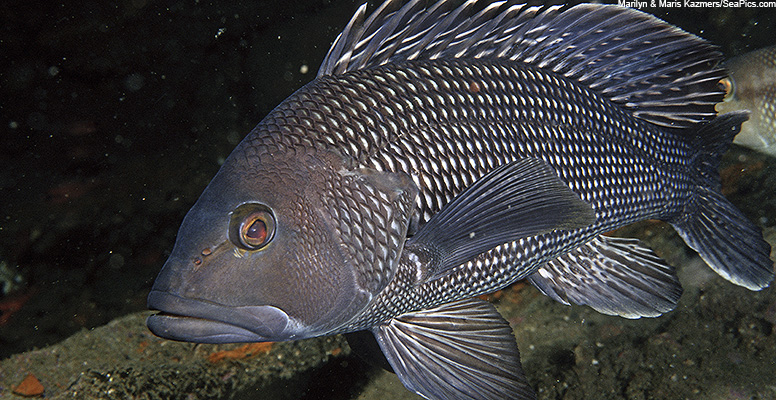
Rhode Island Black Sea Bass kicks off Tuesday. Tautog are still episodically available. Halibut is on the home stretch. Halibut season closes November 7th and the quota is down to 500,000#. Mahi is limited, warm water Albacore is pricey, but generally available, Blackcod is fairly consistent depending on weather, as is rockfish. Call your certified Fish Expert today!
Tragedy at Lummi.
F.O.G. is saddened to report the death at sea of Lummi Harvest Diver Hank William Hoskins Sr. He was diving for cukes and urchins off Sucia Island Wednesday, the 26th of October when his air supply hose was severed by the support boat. Hank did not have any backup air, and drowned. We did not know Hank, nor buy his product, but everyone in the harvest community feels the loss of anyone on the water. It is a timely reminder of the risks water people take to supply us with seafood. Hank was 40 years old and a family man. Please join us in holding the Hoskins family in thought and prayer. We are ever-mindful of Walter Scott's admonition; "It's no Fish Ye're Buying, it's Men's Lives".
Until next time, we are your Rock Picking, History Buffing, Extremely Co-Operative, Tough on Octo, T&T Substituting, Diver Mourning, JFF Crew.
For customer service please reply to this email for Sara
and Paisley at sales@jffarms.com
and Paisley at sales@jffarms.com
or call 360.468.0533




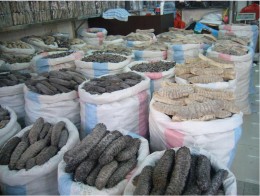






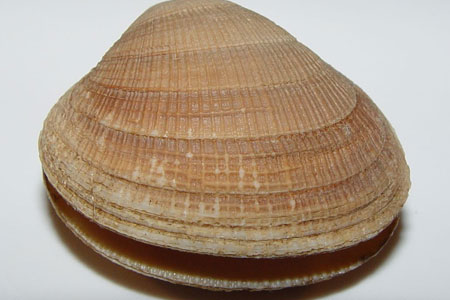
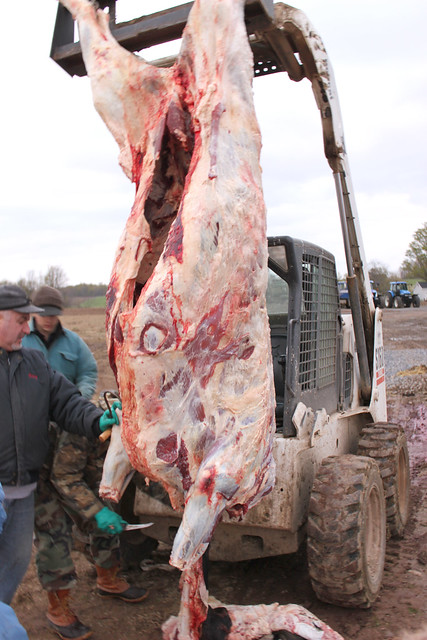


 Where the Magic Happens
Where the Magic Happens 

 One Crab, One Vote.
One Crab, One Vote.


